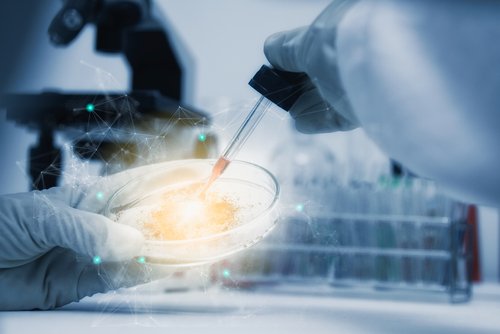Cells can be artificially produced that have many features of those found in human lung cells, researchers report. To do this, they identified the genetic program that regulates the formation and growth of lungs.
The research potentially can contribute to advances in the study of lung diseases such as cystic fibrosis, respiratory distress syndrome, congenital lung disease and pulmonary fibrosis.
The findings were published in the Journal of Clinical Investigation, in the article “Prospective isolation of NKX2-1–expressing human lung progenitors derived from pluripotent stem cells.”
“We performed a detailed characterization of these lung cells to identify the genes that control lung formation and discovered many genes that confirm conserved gene programs across species but also genes that now require further investigation,” Finn Hawkins, MD, the study’s co-first author, said in a press release. “We believe this will be very useful to advance our understanding of human lung disease by studying the process in human cells in the laboratory.”
After promoting the cells’ development from the undifferentiated stem cell stage to a more mature differentiated cell, they could identify those that were lung-cell-like by the expression of the green protein. This allowed them not only to identify NKX2-1 as a major regulator of lung development, but also to produce and separate lung-specific cells to be used in the lab for further studies.
The team developed a protocol to grow these cells into spherical 3D structures, which they termed “lung organoids.” These structures were shown to retain cell interactions resembling those observed in human lung tissues and to express many important genes that are found in fetal lung tissues.
This new research offers not only new insights into human lung cell development, but also a new strategy to potentially isolate and artificially differentiate patient-specific pluripotent stem cells for future applications in regenerative medicine.
“This is also an important step towards generating functional lung tissue for patients with lung disease. Ultimately, this could be used to replace damaged tissue, but there are many short-term benefits including testing new treatments on the individuals’ own tissue in the lab before treating the patient directly,” said Darrell Kotton, MD, senior author of the study.

